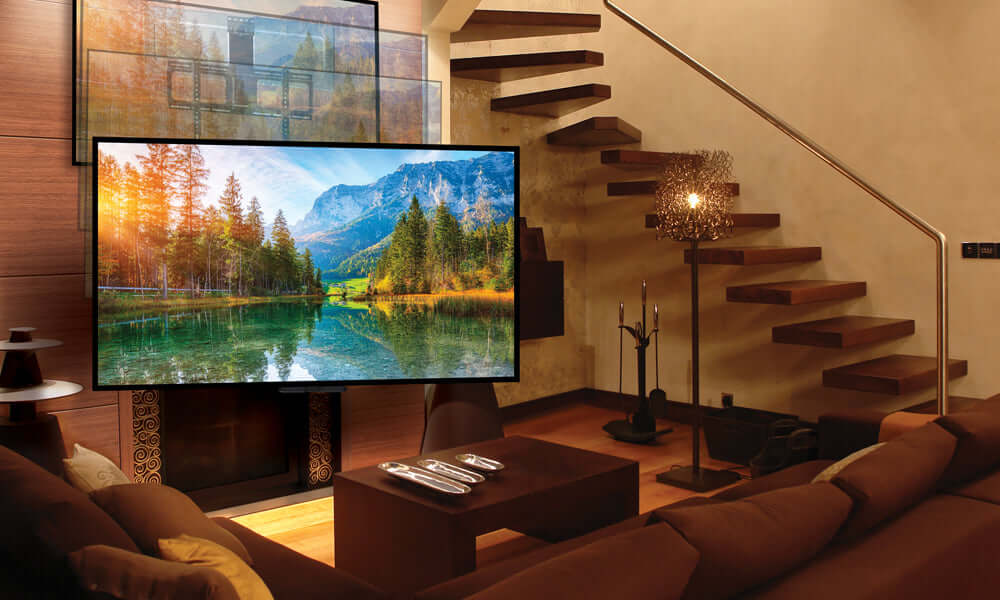How to Upgrade Your Home with Smart Technology is transforming how we live, offering unprecedented convenience, security, and efficiency. From smart lighting and security systems to intelligent appliances and automated routines, the possibilities for enhancing your living space are vast. This guide explores the smart home revolution, providing insights and practical advice to help you navigate the world of connected devices and create a truly intelligent home environment.
Upgrading your home with smart technology can significantly enhance convenience and efficiency. However, aesthetics are also key. To that end, integrating smart devices with stylish design is crucial, and exploring Smart Decor That Complements Modern Architecture can provide inspiration. Ultimately, a successful smart home upgrade should blend seamlessly into your existing decor while offering advanced functionality.
We’ll delve into the core components of a smart home, including hubs, lighting, security, and climate control systems. You’ll learn how to plan your upgrade, select the right devices, and integrate them seamlessly into your existing infrastructure. Furthermore, we’ll examine the benefits of automation, explore emerging trends, and provide troubleshooting tips to ensure a smooth and enjoyable smart home experience. This guide is designed to empower you with the knowledge needed to transform your house into a modern, connected, and responsive home.
Introduction: The Smart Home Revolution: How To Upgrade Your Home With Smart Technology
The integration of smart technology into homes has surged in popularity, transforming how we live, interact with our spaces, and manage our daily routines. This revolution is driven by advancements in connectivity, affordability, and the increasing desire for convenience, security, and energy efficiency. Smart home technology is no longer a futuristic concept but a tangible reality, impacting various aspects of modern living.
Explain the current popularity of smart home technology and its growing impact.
The proliferation of smartphones, high-speed internet, and the Internet of Things (IoT) has fueled the smart home revolution. Consumers are increasingly drawn to the benefits of automation, remote control, and personalized experiences that smart devices offer. The impact is seen across various industries, from home security and entertainment to energy management and appliance manufacturing. This trend is expected to continue, with market analysts predicting significant growth in the smart home sector in the coming years.
Provide examples of how smart home technology improves daily living.

Source: levelupautomationla.com
Upgrading your home with smart technology offers numerous conveniences, from automated lighting to enhanced security systems. A key aspect of this is integrating voice control, which simplifies your interaction with these smart devices. To learn more about this, consider exploring the options available for How to Integrate Voice Control in Your Home , further streamlining your smart home setup and improving overall user experience.
Smart home technology enhances daily living through various applications:
- Convenience: Voice-controlled assistants like Amazon Echo or Google Nest allow users to manage tasks hands-free, such as playing music, controlling lights, or setting reminders.
- Security: Smart security systems with features like remote monitoring, video doorbells, and automated door locks provide enhanced protection and peace of mind.
- Energy Efficiency: Smart thermostats and lighting systems optimize energy consumption by automatically adjusting settings based on occupancy, time of day, and user preferences.
- Entertainment: Smart TVs, streaming devices, and multi-room audio systems offer seamless entertainment experiences, allowing users to access content from various sources and control it with ease.
Share the benefits of integrating smart technology into a home (convenience, security, energy savings, etc.)., How to Upgrade Your Home with Smart Technology
Integrating smart technology offers several key benefits:
- Convenience: Automating tasks and controlling devices remotely simplifies daily routines and saves time.
- Security: Smart security systems provide enhanced protection against intruders and allow homeowners to monitor their property remotely.
- Energy Savings: Smart thermostats and lighting systems optimize energy consumption, reducing utility bills and environmental impact.
- Cost Savings: While there is an initial investment, smart home devices can reduce long-term costs through energy efficiency, reduced utility bills, and potential insurance discounts.
- Improved Comfort: Smart home devices can be personalized to create a comfortable and convenient living environment, such as adjusting lighting, temperature, and entertainment settings to suit individual preferences.